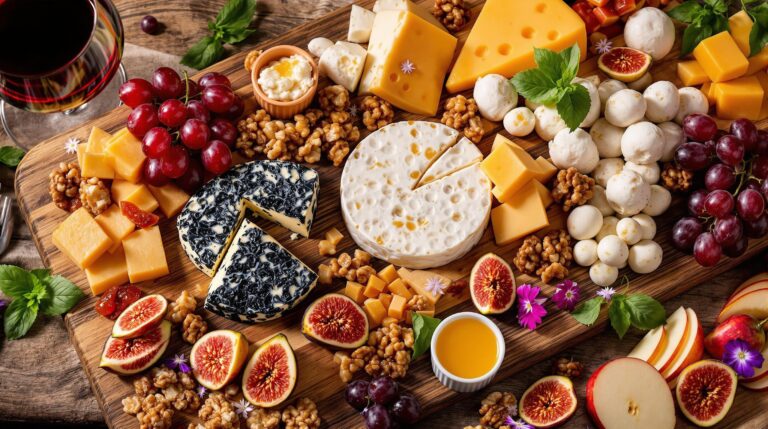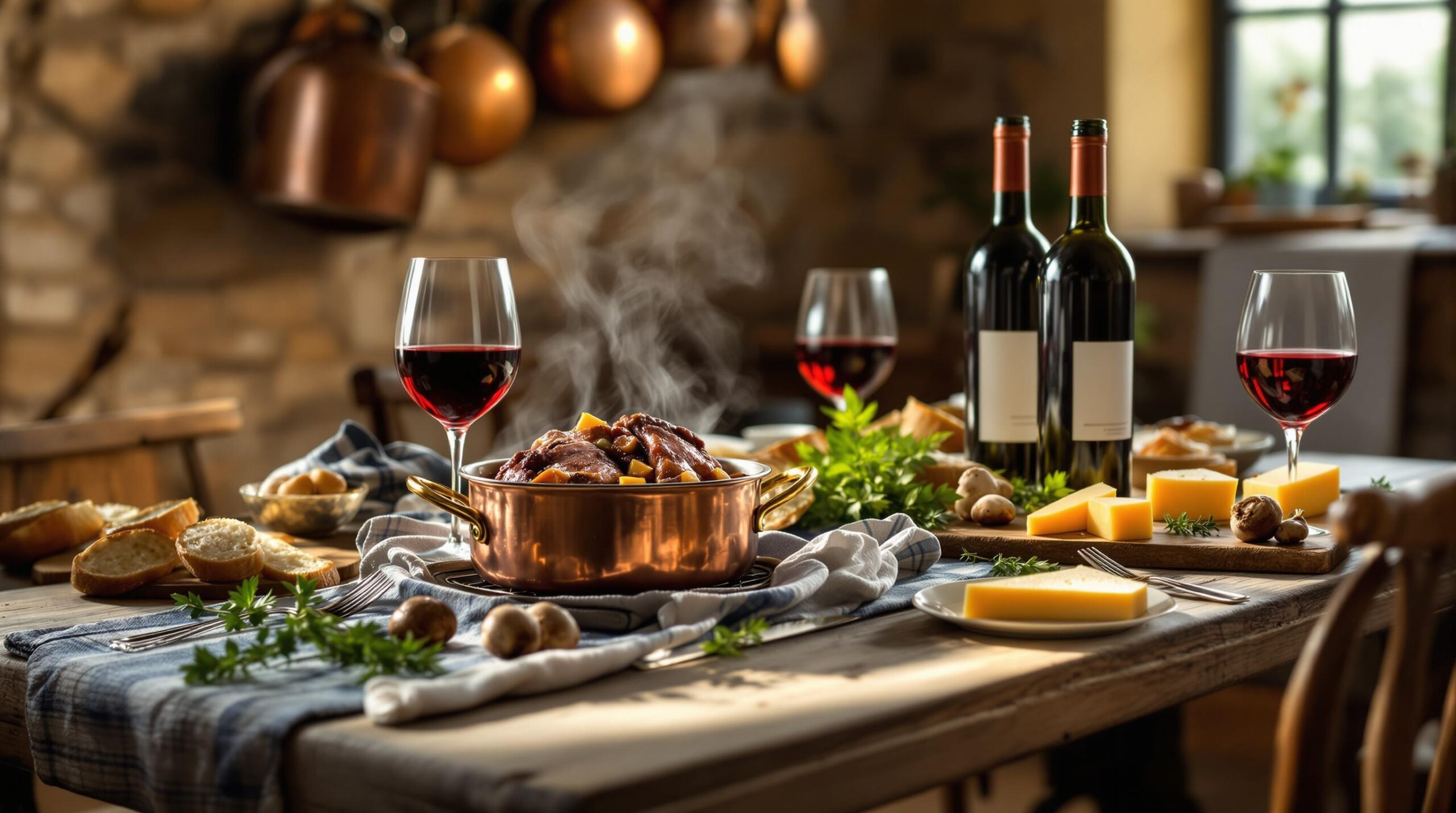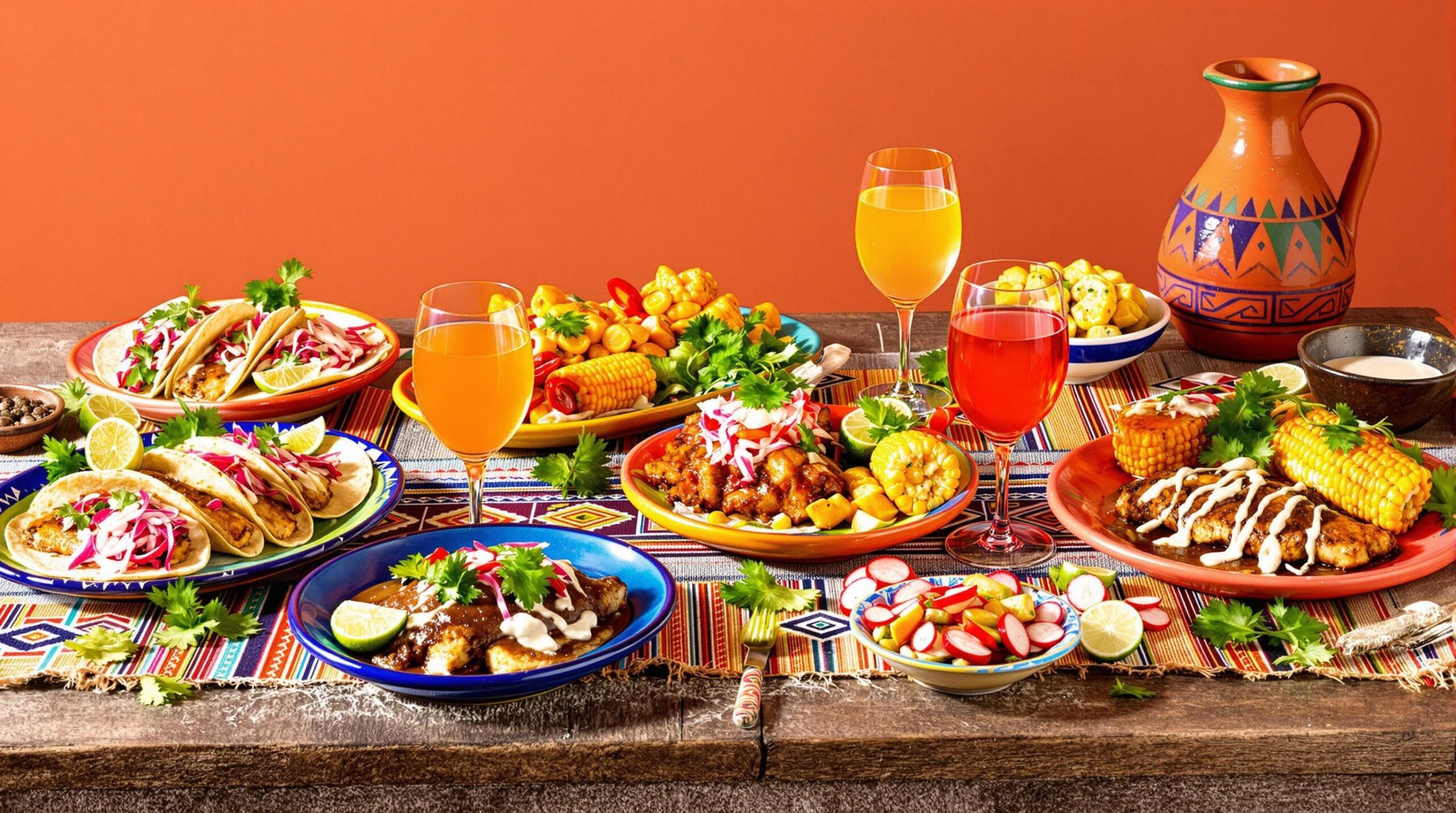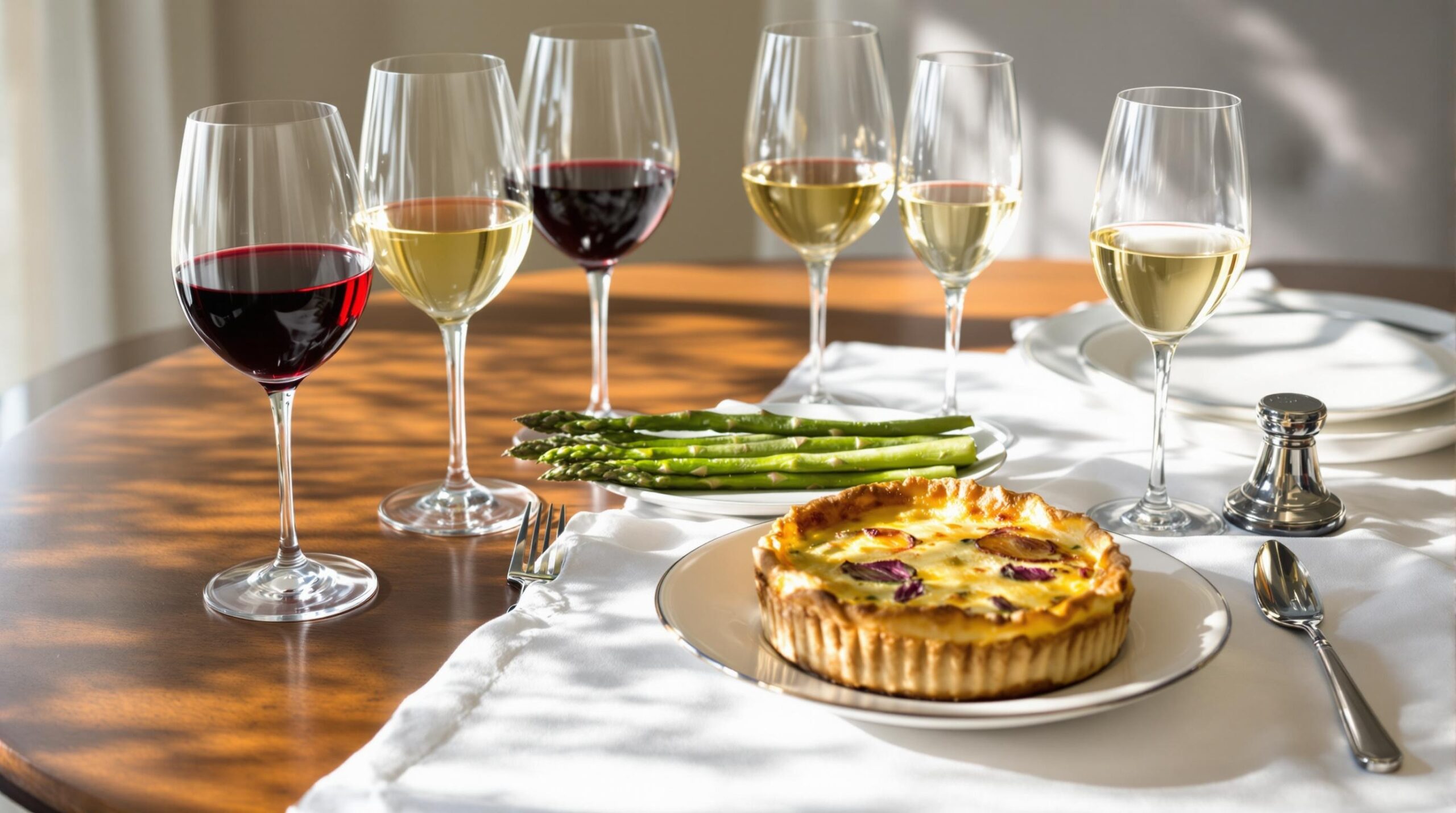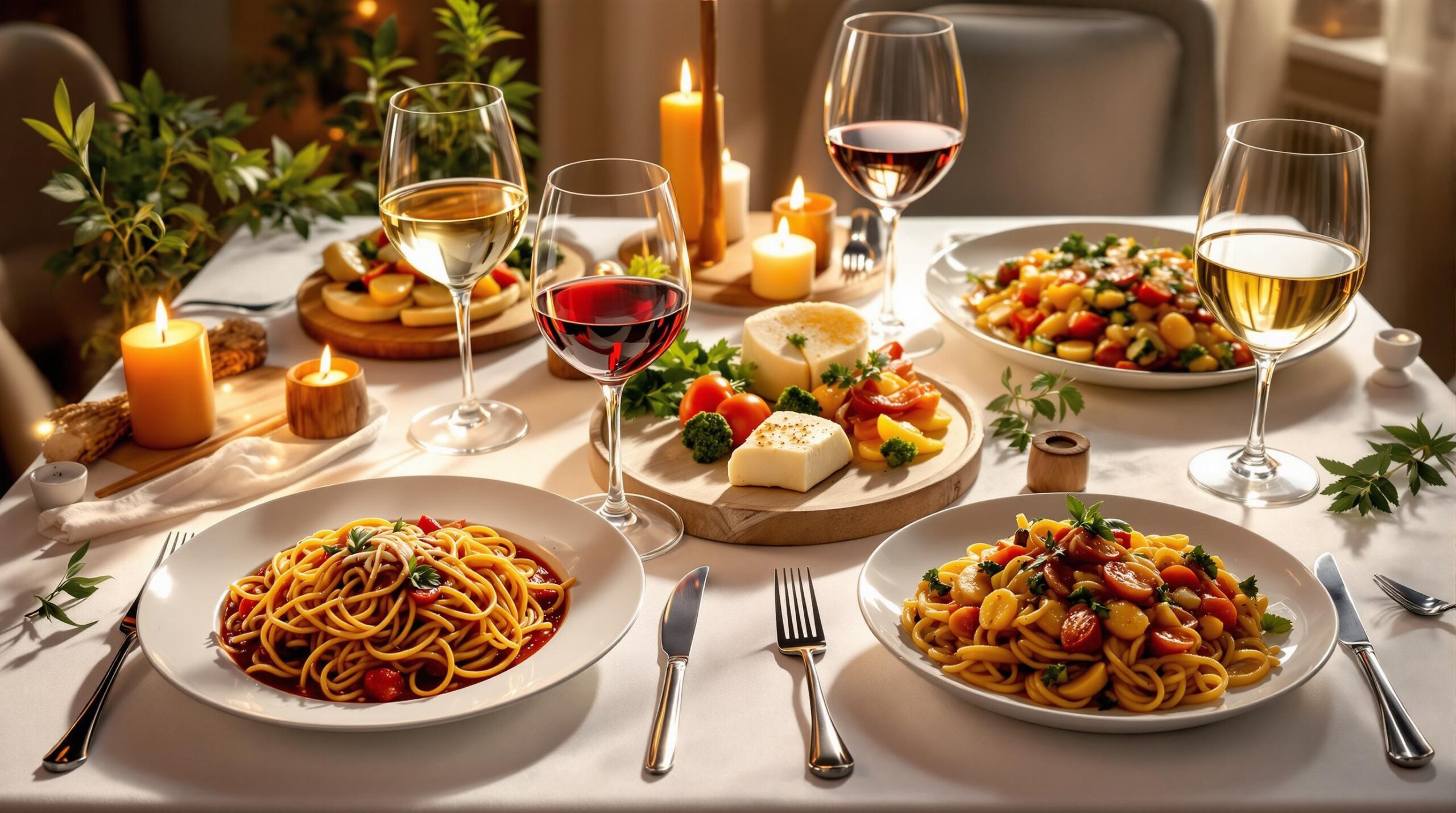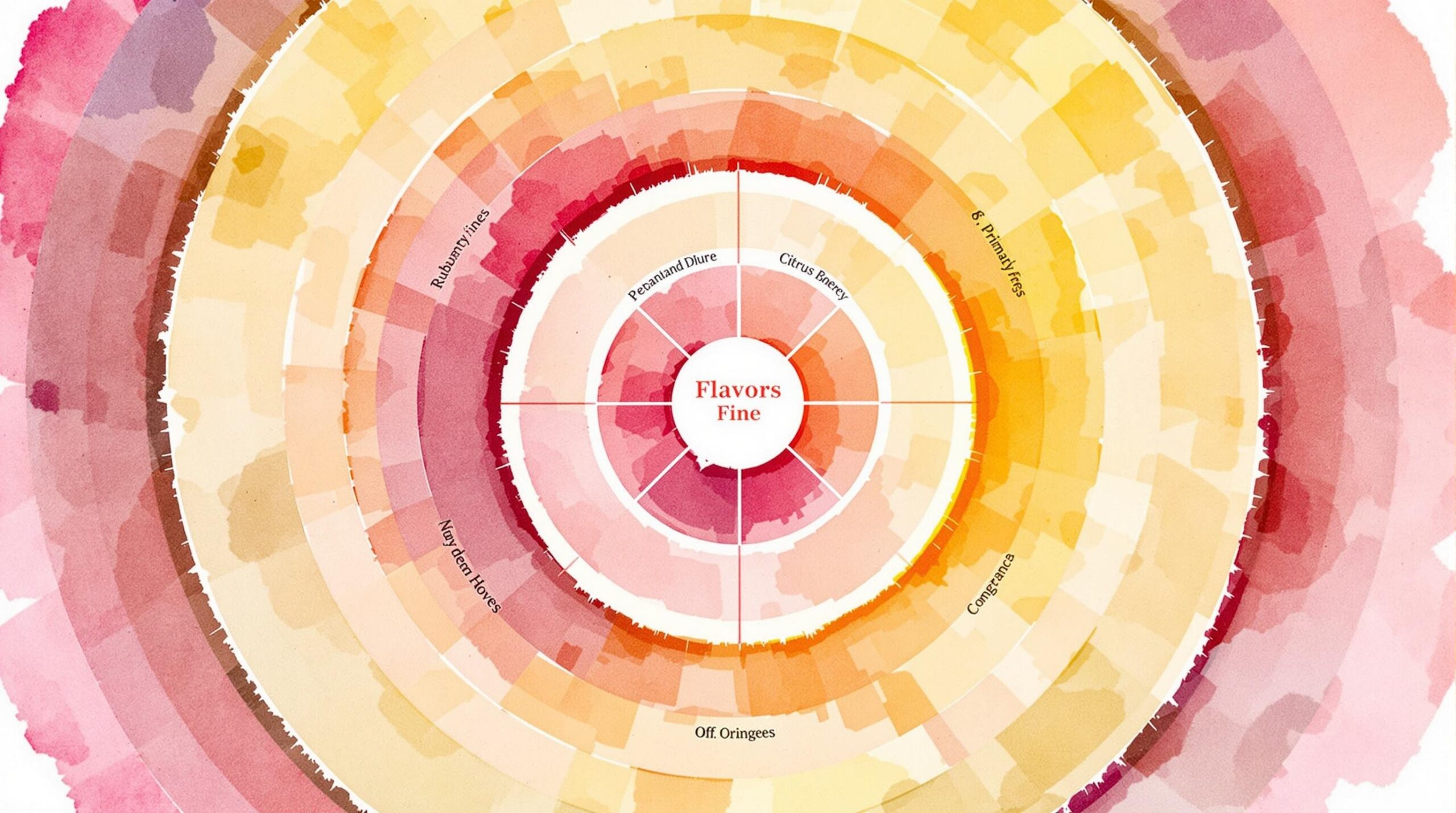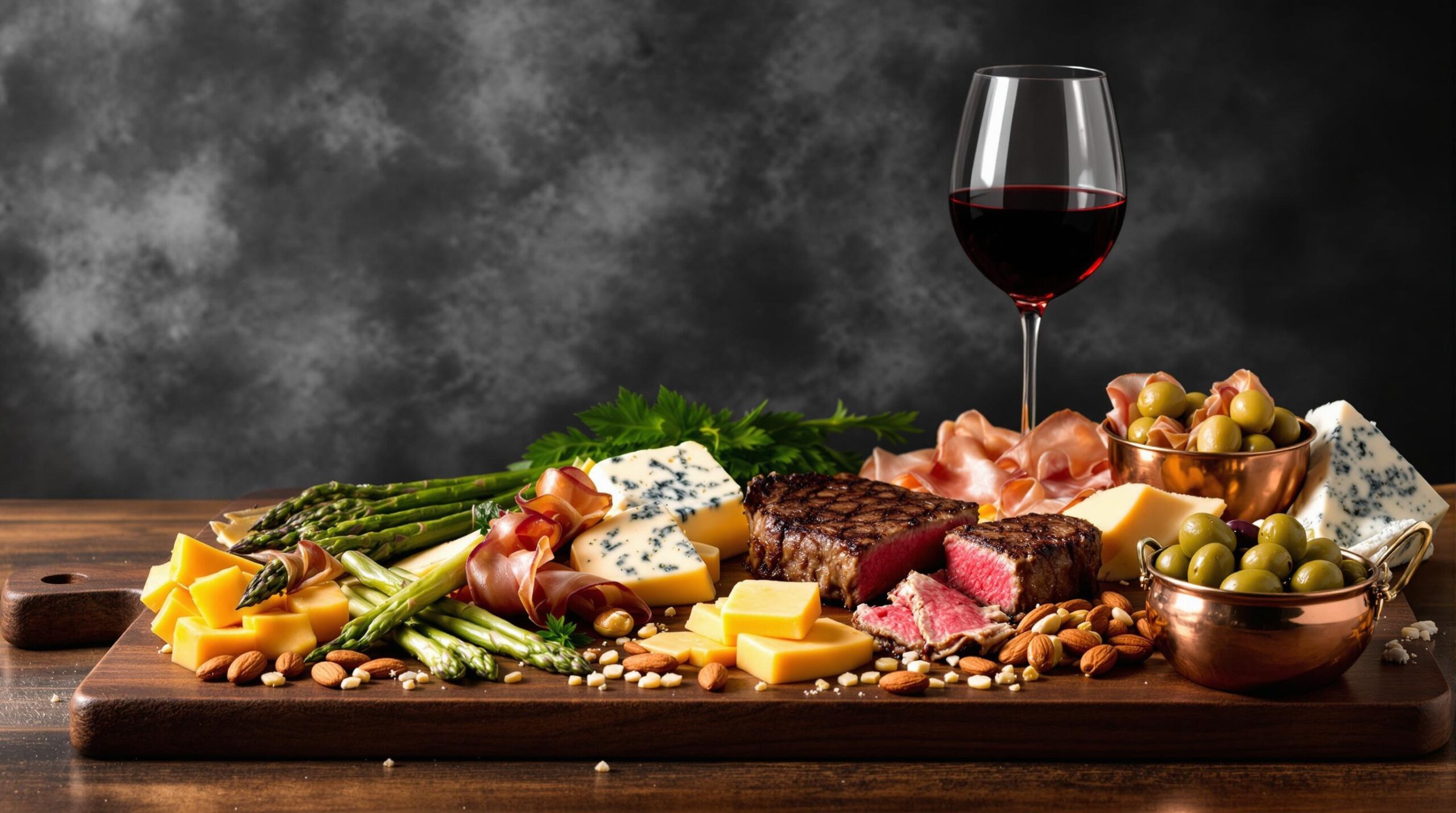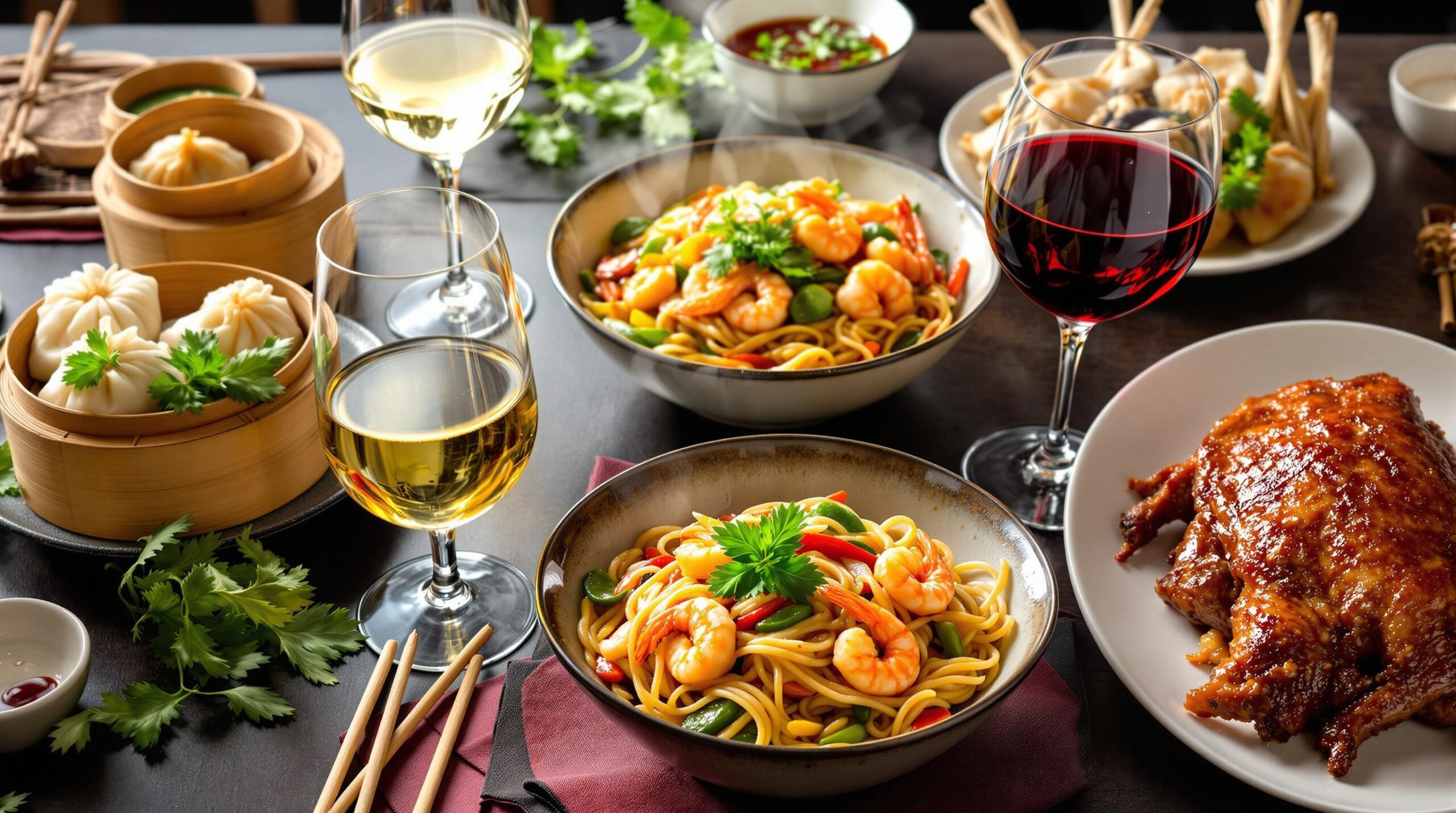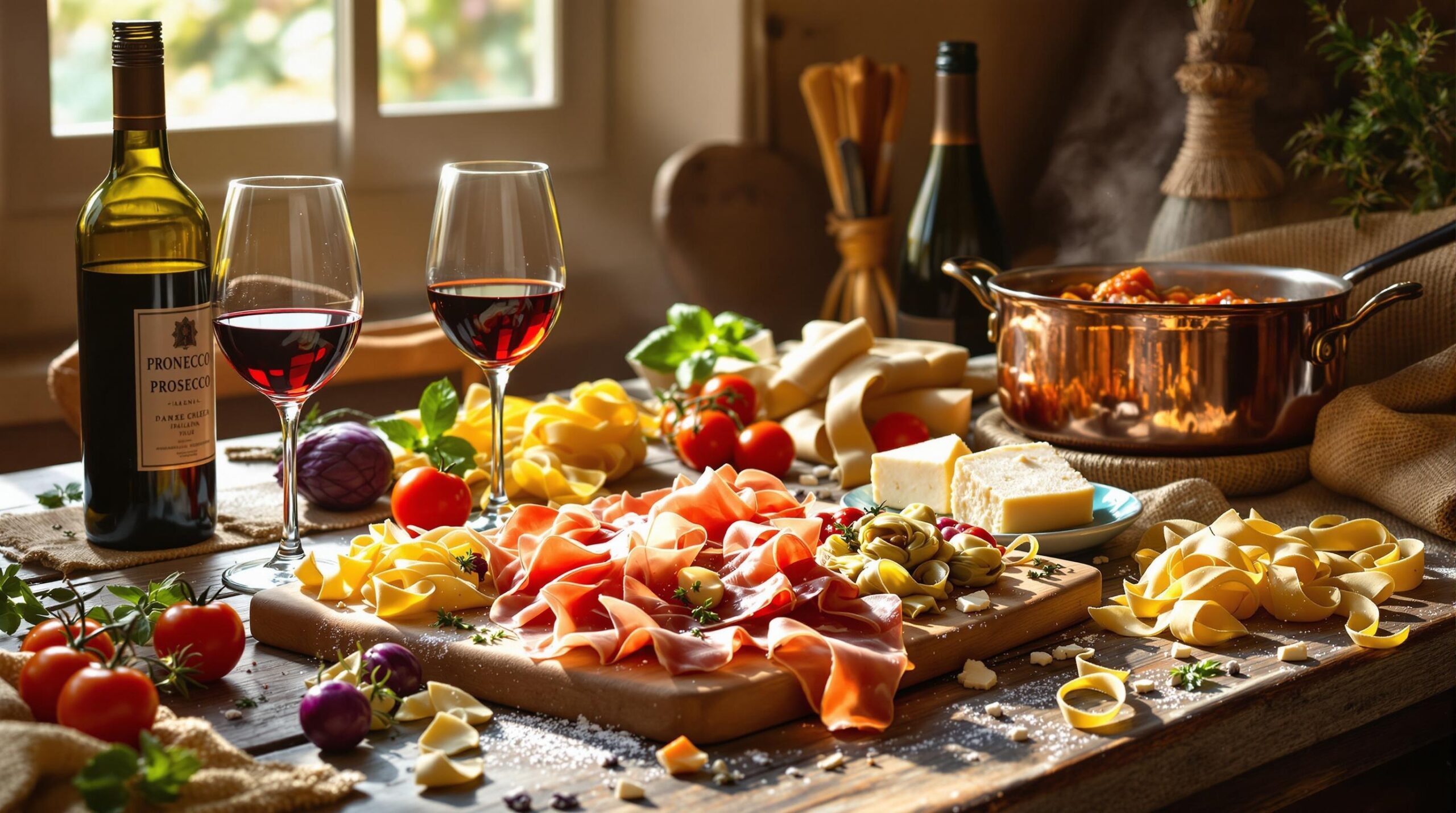Mastering cheese pairings opens up a world of flavor combinations that enhance both everyday meals and special occasions. Understanding basic pairing principles helps create memorable food experiences whether you’re planning a casual night in or hosting a dinner party.
Understanding Cheese Categories and Characteristics
Fresh cheeses like mozzarella and ricotta offer mild, creamy profiles perfect for light pairings. Aged cheeses such as cheddar and parmesan develop complex flavors that need robust partners.
- Fresh: Mozzarella, Burrata, Ricotta, Chèvre
- Soft-ripened: Brie, Camembert
- Semi-firm: Gouda, Gruyère, Manchego
- Hard: Aged Cheddar, Parmesan, Pecorino
- Blue: Roquefort, Gorgonzola, Stilton
Classic Food and Cheese Combinations
Texture contrasts create memorable pairings – crunchy nuts with creamy brie, or crisp apples with aged cheddar. Consider these proven matches:
| Cheese Type | Recommended Pairings |
|---|---|
| Fresh Mozzarella | Tomatoes, Basil, Olive Oil |
| Aged Cheddar | Apples, Pears, Quince Paste |
| Blue Cheese | Honey, Walnuts, Figs |
Beverage Pairing Fundamentals
Wine partnerships follow simple guidelines – match intensity levels and consider regional traditions. Beer and spirits offer exciting alternative pairings worth exploring.
- White wines: Perfect with fresh and soft cheeses
- Red wines: Pair well with aged and hard cheeses
- Beer styles: Wheat beers for fresh cheeses, stouts for aged varieties
- Non-alcoholic: Craft sodas, kombucha, and artisanal teas
Seasonal Cheese Board Planning
Adapting cheese selections to match seasonal availability of accompaniments creates memorable platters that celebrate each season’s unique offerings.
- Spring: Fresh goat cheese, radishes, asparagus, strawberries
- Summer: Burrata, heirloom tomatoes, peaches, fresh herbs
- Fall: Aged cheddar, apples, pears, roasted nuts
- Winter: Alpine cheeses, dried fruits, preserved quince, spiced jams
Mastering Plating Techniques
Strategic arrangement enhances both visual appeal and tasting experience. Consider temperature and texture when planning your layout.
| Element | Plating Tip |
|---|---|
| Cheese Placement | Arrange from mild to strong, clockwise |
| Accompaniments | Group near compatible cheeses |
| Tools | Separate knife for each cheese type |
Storage and Handling Best Practices
Proper storage significantly impacts cheese quality and longevity.
- Temperature: Store between 35-45°F (1-7°C)
- Wrapping: Use cheese paper or parchment, then loosely wrap in foil
- Humidity: Store in crisper drawer with adjusted humidity
- Timing: Remove from refrigeration 30-60 minutes before serving
Building Your Cheese Knowledge
Developing cheese expertise happens through intentional exploration and tasting. Start with these practical steps:
- Tasting Journal: Document cheese characteristics and favorite pairings
- Local Sources: Build relationships with cheesemongers
- Regional Focus: Learn about traditional pairings from specific regions
- Seasonal Exploration: Try new cheese types as seasons change
| Learning Resource | Benefits |
|---|---|
| Cheese Shop Tastings | Expert guidance, curated selections |
| Wine Shop Events | Professional pairing advice |
| Local Food Markets | Seasonal pairing inspiration |
Quick FAQs About Cheese Pairing
What’s the basic rule for pairing cheese with wine?
Match the intensity of the cheese with the wine. Light, fresh cheeses work with crisp whites, while aged hard cheeses pair well with full-bodied reds.
Which cheeses work best with fruit?
• Brie + fresh berries or apples
• Aged cheddar + pears
• Blue cheese + honey and figs
• Gouda + grapes
• Manchego + quince paste
How many cheese types should I serve on a board?
Serve 3-5 different cheeses for variety without overwhelming guests. Include at least one from each category: soft, semi-firm, and aged.
What’s the ideal serving temperature for cheese?
Remove cheese from refrigeration 30-60 minutes before serving. Room temperature (68-72°F/20-22°C) brings out optimal flavors and textures.
How do I pair cheese with beer?
• Pilsners + fresh mozzarella
• IPAs + sharp cheddar
• Stouts + blue cheese
• Wheat beers + goat cheese
What accompaniments work well on a cheese board?
Include:
• Nuts (almonds, walnuts)
• Dried fruits (apricots, cranberries)
• Fresh fruits (grapes, apple slices)
• Honey or fig jam
• Crusty bread and crackers
How much cheese per person for a party?
Plan for 2-3 ounces per person for appetizers, or 5-6 ounces per person if cheese is the main course.
What order should I serve cheese in?
Start with mild cheeses and progress to stronger flavors. This prevents stronger cheeses from overwhelming subtle flavors.
How do I store different types of cheese?
Wrap in cheese paper or wax paper, then loosely in foil. Soft cheeses last 1-2 weeks, while hard cheeses can last 3-4 weeks when properly stored.
Can I freeze cheese?
Hard and semi-hard cheeses freeze acceptably for cooking purposes. Soft cheeses and fresh cheeses don’t freeze well due to texture changes.
Pro Tips for Perfect Cheese Pairing
• Label cheeses on your board with small signs or flags
• Provide separate knives for each cheese type
• Consider seasonal pairings: lighter cheeses in summer, robust choices in winter
• Keep strong-smelling cheeses separate to prevent flavor transfer
• Offer both sweet and savory accompaniments
• Include a mix of textures and milk types (cow, goat, sheep)
Common Pairing Mistakes to Avoid
• Serving cheese straight from the refrigerator
• Overwhelming the board with too many options
• Using only one type of accompaniment
• Forgetting to provide separate serving utensils
• Pairing delicate cheeses with overpowering wines
• Not considering texture contrasts in pairings

